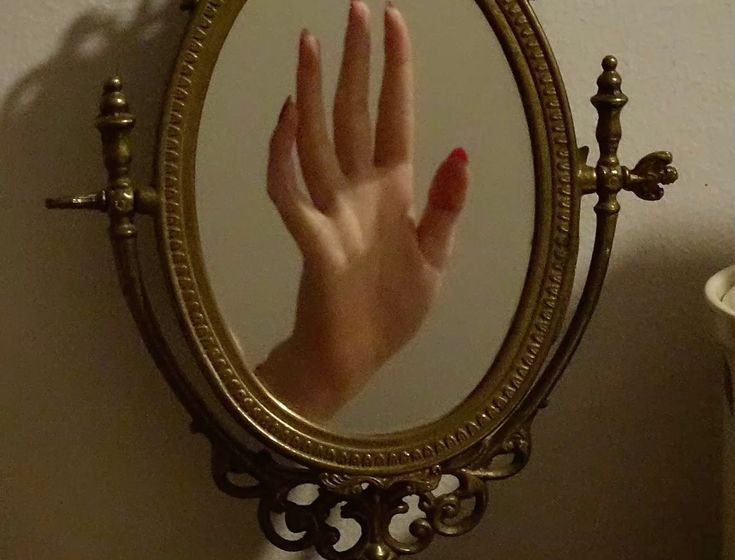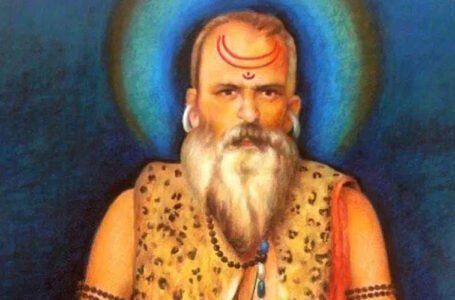The Mirror and Suspicious Wife : A Face in the Glass: Love, Trust, and the Invention of Reflection

A Face in the Glass: Love, Trust, and the Invention of Reflection
-Trushti Dand
What happens when a new invention, unfamiliar and mysterious, becomes the cause of suspicion in a marriage built on tradition? In “The Mirror and the Suspicious Wife,” a folktale set in a time when mirrors were newly invented and unfamiliar, the narrative follows a seemingly simple misunderstanding between a husband and wife, which unveils deeper themes of trust, ignorance, perception, and the impact of novelty on relationships. The story begins with a man who acquires a mirror—then a rare and unknown object—and secretly keeps it in a box. When he looks into it, he sees an image of a man and, never having clearly seen his own reflection before, assumes it is his late father’s face. Emotionally moved, he makes it a ritual to look into the mirror every morning and evening, cherishing what he believes to be the vision of his beloved father. His wife, observing this strange behaviour and unaware of the mirror’s reflective nature, assumes the worst. She believes her husband is admiring another woman’s photograph, hidden from her deliberately, and accuses him of infidelity. A confrontation ensues, leading to the eventual revelation when both look into the mirror and see their own reflections. The misunderstanding is cleared, the mystery of the mirror revealed, and the wife becomes awestruck by this magical object that can show faces so vividly. What follows is not only the resolution of a marital conflict but also a symbolic moment of enlightenment, where unfamiliar technology bridges the gap between superstition and understanding.
The cultural and historical significance of this story lies in its setting during a time of transformation—when objects we now take for granted, like mirrors, were unfamiliar and mysterious. In ancient and pre-modern societies, mirrors were considered mystical or luxurious, often accessible only to the elite. Their reflective power was sometimes linked to the supernatural or divine, with cultures believing mirrors could reveal souls or hidden truths. In this folktale, the mirror does reveal a truth—not of infidelity, but of ignorance and assumptions bred by unfamiliarity. The story also reflects the simplicity and sincerity of rural or traditional marital relationships where daily routines, silence, and minimal communication create both harmony and tension. The wife’s suspicion is not rooted in malice, but rather in fear of abandonment and emotional insecurity, emotions that remain deeply relatable even today. Her readiness to believe the worst stems from the secretive behaviour of her husband, who too, is innocent but fails to communicate openly. The tale, though comic and light in tone, reflects a broader truth about how technological advancement can disrupt the dynamics of human relationships when not accompanied by understanding.
The themes of the story are rich and layered. Central among them is misunderstanding, which arises from a lack of communication and knowledge. The husband never thinks to explain his newfound treasure to his wife, and the wife, instead of asking directly, makes assumptions. This leads to the second major theme—perception versus reality. The mirror here acts as a literal and symbolic device of reflection, highlighting how people often project their fears and assumptions onto situations without knowing the truth. The story also touches on trust and suspicion in relationships, where a simple act of secrecy spirals into imagined betrayal. There is a subtle yet powerful commentary on the role of women in traditional households, where emotional reactions stem from a deep-seated anxiety about being replaced or unloved. Additionally, the tale embodies the theme of discovery—both the discovery of the mirror as a technological object and the self-discovery that comes with realizing how one sees and is seen.
The most important symbol in the story is, naturally, the mirror. It is a portal to both revelation and confusion. For the husband, it symbolizes memory, love, and connection to his deceased father. For the wife, it becomes a symbol of betrayal, until it transforms into a source of wonder and joy. The mirror also represents the self, both physically and psychologically. As a new invention, it shows people their own faces—perhaps for the first time with such clarity—forcing them to confront themselves in a new way. On a broader level, it stands for truth, reflecting not just the physical image, but also the clarity that comes when misunderstandings are resolved. The box that holds the mirror may be read as a symbol of secrecy or mystery—containing something powerful yet misunderstood.
Literary devices enrich the simplicity of the tale. There is a gentle use of dramatic irony, as the readers understand early on what the mirror truly is, while the characters remain oblivious. This creates a humorous yet suspenseful tension, as we watch the wife’s jealousy grow while knowing her conclusion is mistaken. Symbolism, as mentioned, is strong in the use of objects like the mirror and the box. The story also uses dialogue effectively to build character and emotion. The confrontation between husband and wife is emotionally charged yet realistic, filled with accusations and confusions that readers can empathize with. The ending, with both characters looking into the mirror together, offers a moment of epiphany, where the truth becomes visible—literally and metaphorically.
In terms of modern relevance, the story feels timeless. While the specifics of a mirror being an unfamiliar object may no longer apply, the core issues—lack of communication, assumptions in relationships, emotional insecurity, and the clash between the old and the new—remain very much alive. Today, technology continues to transform human relationships, often creating distance despite greater connectivity. Think of how smartphones or social media can lead to similar misunderstandings—seeing a message, a picture, or an interaction out of context can provoke suspicion or jealousy. Like the mirror, these tools show us things, but not always the full story. We might see a glimpse of someone’s life and assume things without understanding the background, just as the wife assumes betrayal based on a reflection she doesn’t understand. Moreover, the story raises questions about how people interpret what they see, a theme that resonates in an age of curated realities and half-truths on digital platforms.
The tale also serves as a reflection on the importance of emotional honesty. Had the husband simply shared his fascination with the mirror, the entire conflict could have been avoided. Similarly, if the wife had confronted her curiosity with openness rather than suspicion, a misunderstanding could have turned into shared wonder from the beginning. This emphasizes the role of curiosity balanced with trust—a lesson particularly useful in interpersonal relationships today, where open dialogue often gets replaced by assumptions based on surface-level perceptions.
From a psychological perspective, the mirror symbolizes self-awareness. When the couple finally looks into it together, they not only see their faces but also metaphorically see themselves and each other with clarity. It’s a moment of recognition—not just of the object’s function, but of their own emotional reactions. The wife realizes her error, and the husband becomes aware of his failure to communicate. This realization strengthens their bond and turns what could have been a wedge into a moment of unity and shared discovery.
In conclusion, “The Mirror and the Suspicious Wife” is more than just a folk anecdote—it is a tender, humorous, and insightful narrative about the human condition. It uses a simple misunderstanding to explore deeper emotional truths about love, trust, perception, and the impact of new knowledge. The mirror, both as an object and as a metaphor, brings clarity not just to the characters’ faces but to their understanding of one another. Its cultural value lies in depicting how traditional societies responded to innovation, while its thematic richness ensures its relevance even today. The story reminds us that sometimes, what we fear or misinterpret is simply a reflection of our own insecurities, and that clarity often comes not just from seeing clearly, but from seeing together.


